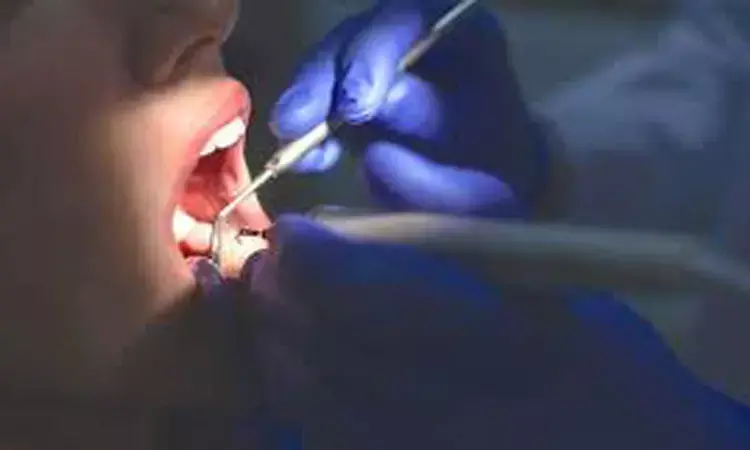- Home
- Medical news & Guidelines
- Anesthesiology
- Cardiology and CTVS
- Critical Care
- Dentistry
- Dermatology
- Diabetes and Endocrinology
- ENT
- Gastroenterology
- Medicine
- Nephrology
- Neurology
- Obstretics-Gynaecology
- Oncology
- Ophthalmology
- Orthopaedics
- Pediatrics-Neonatology
- Psychiatry
- Pulmonology
- Radiology
- Surgery
- Urology
- Laboratory Medicine
- Diet
- Nursing
- Paramedical
- Physiotherapy
- Health news
- Fact Check
- Bone Health Fact Check
- Brain Health Fact Check
- Cancer Related Fact Check
- Child Care Fact Check
- Dental and oral health fact check
- Diabetes and metabolic health fact check
- Diet and Nutrition Fact Check
- Eye and ENT Care Fact Check
- Fitness fact check
- Gut health fact check
- Heart health fact check
- Kidney health fact check
- Medical education fact check
- Men's health fact check
- Respiratory fact check
- Skin and hair care fact check
- Vaccine and Immunization fact check
- Women's health fact check
- AYUSH
- State News
- Andaman and Nicobar Islands
- Andhra Pradesh
- Arunachal Pradesh
- Assam
- Bihar
- Chandigarh
- Chattisgarh
- Dadra and Nagar Haveli
- Daman and Diu
- Delhi
- Goa
- Gujarat
- Haryana
- Himachal Pradesh
- Jammu & Kashmir
- Jharkhand
- Karnataka
- Kerala
- Ladakh
- Lakshadweep
- Madhya Pradesh
- Maharashtra
- Manipur
- Meghalaya
- Mizoram
- Nagaland
- Odisha
- Puducherry
- Punjab
- Rajasthan
- Sikkim
- Tamil Nadu
- Telangana
- Tripura
- Uttar Pradesh
- Uttrakhand
- West Bengal
- Medical Education
- Industry
AI helps dentists locate mandibular canals accurately

In order to plan a dental implant operation and the implant size and position, dentists need to know the exact location of the mandibular canal, a canal located in both sides of the lower jaw that contains the alveolar nerve.
The lower jaw is an anatomically complex structure and medical experts use X-ray and computer tomography (CT) models to detect and diagnose such structures. Typically, dentists and radiologists define the location of the mandibular canals manually from the X-ray or CT scans, which makes the task laborious and time-consuming. That is why an automatized way to do this could make their work and placement of dental implants much easier.
To bring a solution to this problem, researchers at the Finnish Center for Artificial Intelligence FCAI, Tampere University Hospital, Planmeca and the Alan Turing Institute developed a new model that accurately and automatically shows the exact location of mandibular canals. The model is based on training and using deep neural networks. The researchers trained the model by using a dataset consisting of 3D cone beam CT (CBCT) scans.
The model is based on a fully convolutional architecture, which makes it as fast and data-efficient as possible. Based on the research results, this type of a deep learning model can localise the mandibular canals highly accurately. It surpasses the statistical shape models, which have thus far been the best, automatized method to localise the mandibular canals.
In simple cases - when the patient does not have any special conditions, such as osteoporosis - the model is as accurate as a human specialist. Most patients that visit a dentist fall into this category. 'In more complex cases, one may need to adjust the estimate, so we are not yet talking about a fully stand-alone system,' says Joel Jaskari, Doctoral Candidate and the first author of the research paper.
Using Artificial Intelligence has another clear advantage, namely the fact that the machine performs the job equally fast and accurately every time. 'The aim of this research work is not, however, to replace radiologists but to make their job faster and more efficient so that they will have time to focus on the most complex cases,' adds Professor Kimmo Kaski.
Planmeca, a Finnish company developing, manufacturing and marketing dental equipment, 2D and 3D imaging equipment and software, collaborates with FCAI. The company is currently integrating the presented model into its dedicated software, to be used with Planmeca 3D tomography equipment.
The research results were recently published in the prestigious publication series Scientific Reports. Link to the research article: https://www.nature.com/articles/s41598-020-62321-3
Hina Zahid Joined Medical Dialogue in 2017 with a passion to work as a Reporter. She coordinates with various national and international journals and association and covers all the stories related to Medical guidelines, Medical Journals, rare medical surgeries as well as all the updates in the medical field. Email: editorial@medicaldialogues.in. Contact no. 011-43720751
Dr Kamal Kant Kohli-MBBS, DTCD- a chest specialist with more than 30 years of practice and a flair for writing clinical articles, Dr Kamal Kant Kohli joined Medical Dialogues as a Chief Editor of Medical News. Besides writing articles, as an editor, he proofreads and verifies all the medical content published on Medical Dialogues including those coming from journals, studies,medical conferences,guidelines etc. Email: drkohli@medicaldialogues.in. Contact no. 011-43720751


